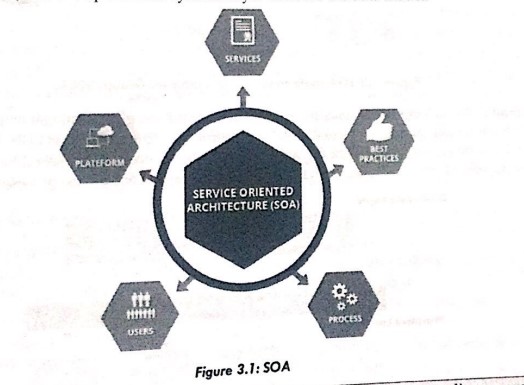Explain the components of SOA from various aspects.
Service-Oriented Architecture (SOA)
Service-Oriented Architecture (SOA) is an architectural approach that allows diverse applications to communicate independently of platform, implementation language, or location by leveraging generic and dependable services that may be utilized as application building blocks. SOA encompasses approaches and strategies for developing complex applications and information systems. SOA differs from traditional architecture in that it has its own set of architectural traits and rules. SOA combines a group of loosely coupled black box components to offer a well-defined degree of service.
The defining Concepts of SOA
- The business value is more important than the technical strategy.
- Strategic goals are more important than benefits related to specific projects.
- Intrinsic interoperability is more important than custom integration.
- Shared services are more important than implementations with a specific purpose.
- Flexibility is given more importance than optimization.
- Evolutionary refinement is given more importance than the pursuit of initial perfection.
Roles in each of the Service-Oriented Architecture building blocks
The services are specified as logical entities which are accessed by the consumers via one or more public interfaces. It is a distinct unit of functionality that can be accessed remotely, acted on, and updated separately, such as receiving a credit card statement online.
A service has four properties:
- It logically represents a business activity with a specified outcome.
- It is self-contained.
- It is a black box for its consumers.
- It may consist of other underlying services.
The building blocks of service-oriented architecture are made up of 3 roles.
- Service provider.
- Service broker.
- Service requester/consumer.
- The service provider collaborates with the service registry to discuss the 'whys' and 'hows' of the services being supplied, such as security, availability, and pricing. This position also defines the service category and whether or not any trading agreements are required.
- A service broker (or service registry) is responsible for providing information about the service to a requester. The broker's scope is determined by whoever implements it. It may be public or private. The service requester searches the broker registry for entries and then ties them to the service provider. They may or may not be able to access numerous services, depending on the service requester's capabilities.







Comments
Post a Comment